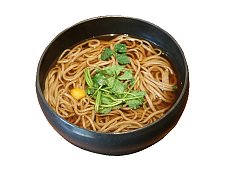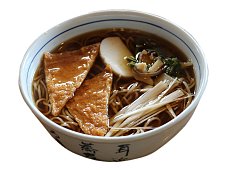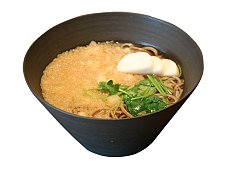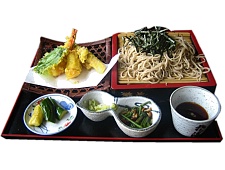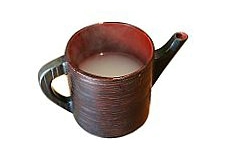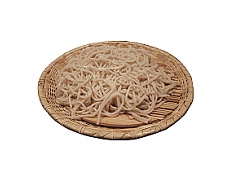
Mori/Zaru Soba (cold)
The most basic kind of chilled soba served on a tray with a simple chilled dipping sauce (tsuyu) served on the side. The dipping sauce is usually a mixture of soup stock, water and mirin. There are historical differences between Zaru and Mori soba. However in recent times, one major difference between the two is zaru soba has nori seaweed on top of the soba noodles while mori soba does not.


